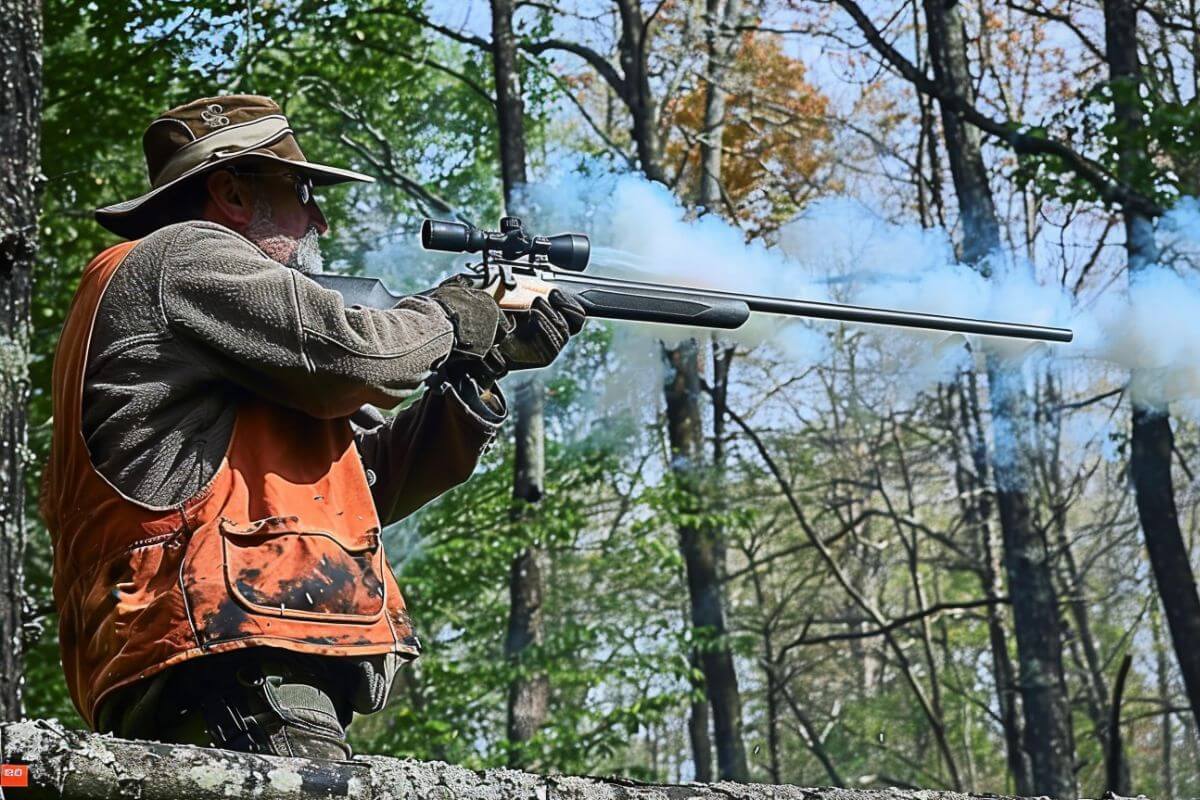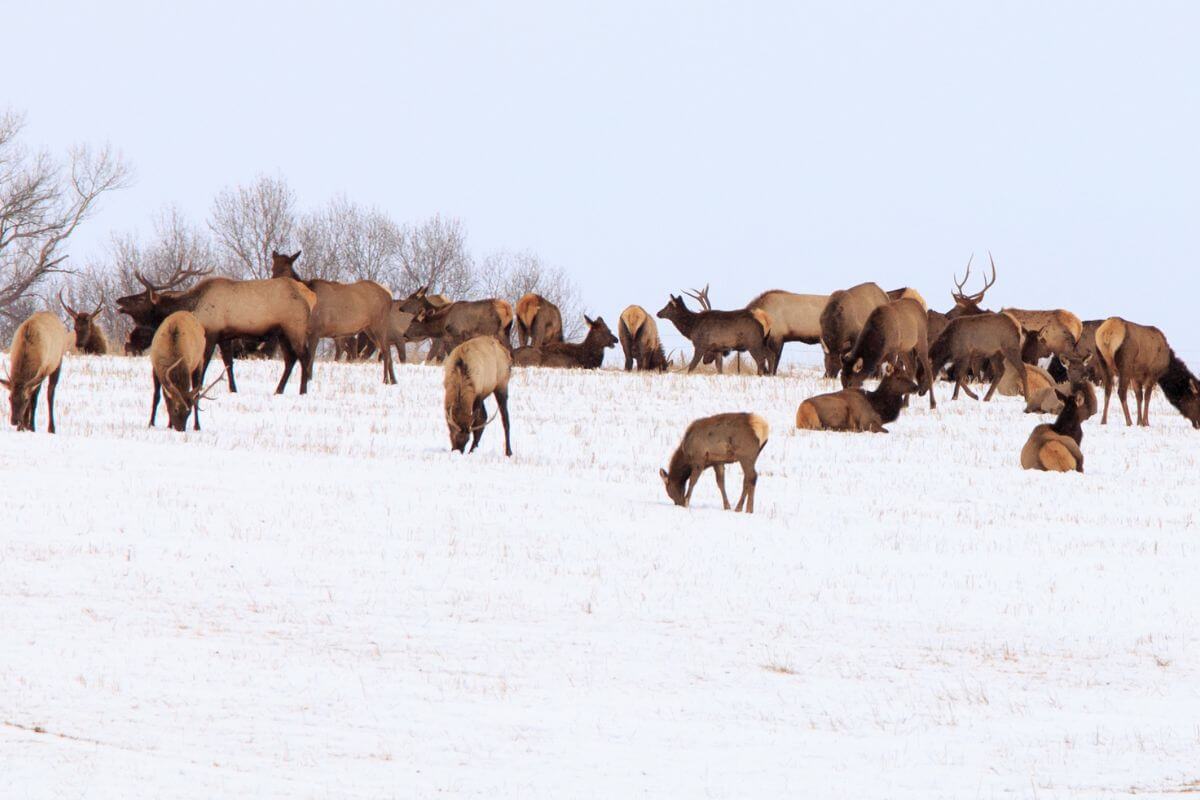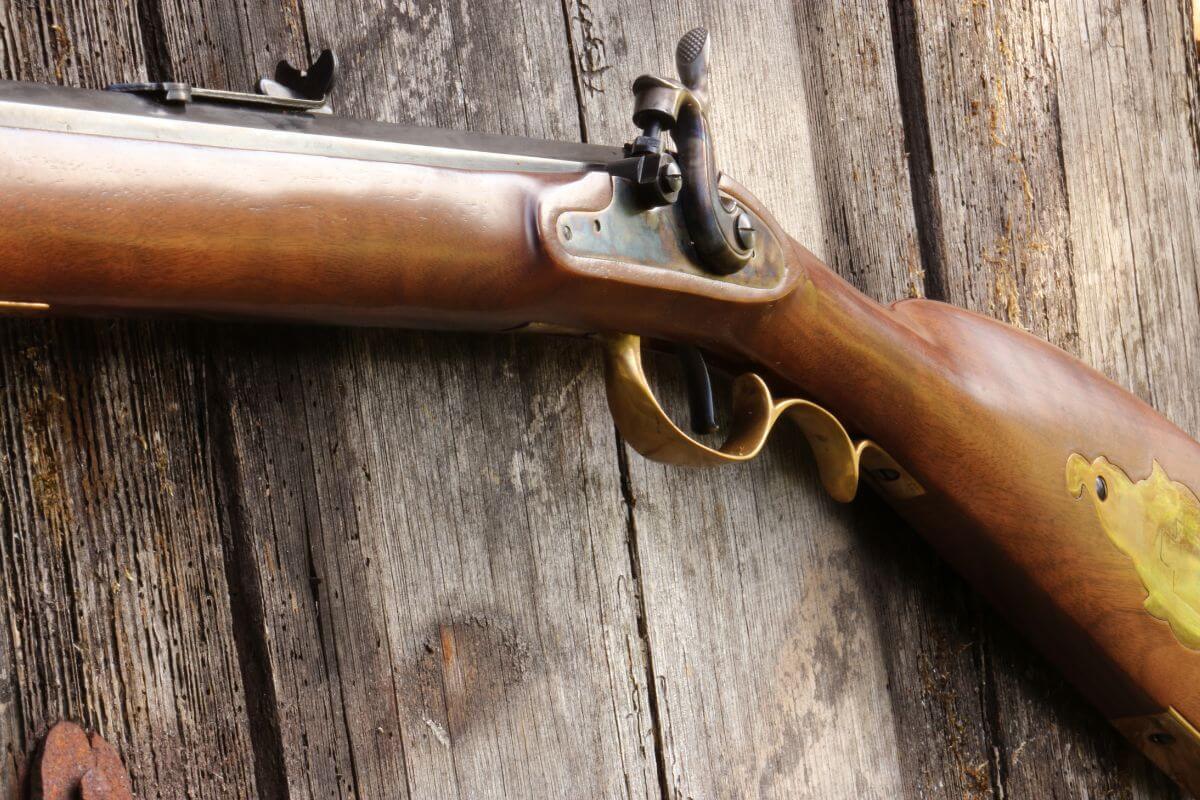Are you an avid hunter or someone intrigued by traditional black powder hunting? Perhaps you’ve been considering Montana as your next hunting destination. Well, Montana Muzzleloader Season will be sure to pique your interest.
As Montana became the final frontier state to establish its specifics, the Montana Muzzleloader Season was crafted to honor and preserve the traditional heritage of black powder hunting that dates back over a century.
If you’re enthusiastic about carrying on the rich tradition of black powder hunting, there are indeed a few things you’d want to keep in mind before you plan your Montana hunting adventure. From identifying the right kind of firearm to understanding the key dates and regulations, our comprehensive guide will provide you with all the season details to make your experience a safe and memorable one.
- Related article: Montana Hunting Advice
You’re stepping into a world of primitive hunting, where tradition meets skill, and top-of-the-line rifles are of the heritage variety only. So, let’s make every shot count and immerse ourselves in the Montana wilderness.
7 Key Takeaways on Montana Muzzleloader Season
- Designed for a historical hunting experience, the Heritage Muzzleloader Season restricts the use of modern muzzleloaders, allowing only traditional black powder and projectiles.
- A traditional muzzleloader is loaded by pouring a pre-measured charge of loose black powder or substitutes down the bore.
- The Montana muzzleloader season generally falls in December, with varying dates each year.
- Muzzleloader season for deer and elk in Montana runs from December 14 to 22.
- Montana permits the use of flintlock and percussion caps.
- The muzzleloader hunting season is allowed for individuals who possess licenses or permits that are valid for the general season and are intended for elk and deer.
- Montana has strict guidelines, often prohibiting the use of sabots. Awareness of these rules ensures legal and ethical equipment usage.
About Montana Muzzleloader Season

Montana Muzzleloader Season offers a unique hunting experience, distinct from the traditional bow or rifle seasons. For many, this season is a cherished opportunity to reconnect with nature and tap into the old-time thrill of muzzleloader hunting.
It’s important to closely acquaint yourself with Montana’s muzzleloader season specifics to ensure a safe and successful muzzleloader hunt. Here are some things you need to know before you load your muzzleloader and set out.
1. Montana Heritage Muzzleloader Season

The state of Montana is known for its rich hunting traditions and vast wilderness, making it an ideal destination for outdoor enthusiasts.
To preserve the legacy of traditional black powder hunting, the state established the Montana Heritage Muzzleloader Season. This unique hunting season provides a primitive hunting experience that harnesses the original traditions established by our forefathers.
The Montana Heritage Muzzleloader Season, also known as the traditional muzzleloader season, strictly restricts the use of modern muzzleloaders. Only heritage muzzleloaders are allowed, emphasizing the use of antique-style firearms.
During this season, hunters are required to use traditional ignition systems, such as flintlock or percussion caps. In addition, only traditional projectiles, such as round balls or lead conical bullets, are allowed. Hunters must also adhere to specific powder restrictions, using only black powder.
Black powder hunting has been a staple in all 50 states for over one hundred years, and the establishment of the Montana Heritage Muzzleloader Season further demonstrates the state’s commitment to preserving this time-honored tradition.
Despite the advancements in modern firearms technology, there are still many manufacturers who specialize in traditional-style rifles, ensuring that enthusiasts have access to authentic equipment.
For those seeking a unique and challenging hunt steeped in history, the Montana Heritage Muzzleloader Season provides an opportunity to embrace the ancient art of black powder hunting.
2. Muzzleloader Heritage Season Firearm

Muzzleloader Heritage Season, also known as muzzleloader hunting, is a traditional and nostalgic method of hunting that involves the use of muzzleloading firearms.
These firearms are loaded by pouring a pre-measured charge of loose black powder, Pyrodex, or other black powder substitutes down the bore. A plain lead projectile is then placed over the powder charge by pushing it down the bore from the muzzle end and seating it on the powder charge.
To better understand some of these terms, here are its definitions:
- Loose powder – Loose powder is a type of gunpowder that hasn’t been shaped into a pellet or stick. It is measured using a measuring device and then poured down the bore of a gun.
- Plain Lead Projectile – This refers to a type of projectile that is made entirely of lead and can be either bullet-shaped, conical, or round. It should not have any additional features like sabots to increase its range or power. In the case of round balls, they may be covered with a cloth patch.
There are several requirements for a muzzleloader to be used during this season. Here’s what makes a muzzleloader a muzzleloader — and what doesn’t:
| Muzzleloader Must Be: | Muzzleloader Must Not Be: |
| Charged with black powder, Pyrodex, or an equivalent | Capable of being loaded from the breech of the barrel |
| Ignited by a percussion, flintlock, matchlock, 209 primer, or wheel lock mechanism | Loaded with any pre-prepared paper or metallic cartridges |
| A minimum of .45 caliber | More than two barrels |
| Used with plain lead projectiles only | Used with sabots or other similar power and range-enhancing manufactured loads |
| “Skirts” or gas checks on the base are allowed | Used with scopes |
To better understand the requirements of a muzzleloader in Montana, here’s a closer look at its ignition systems:
- Percussion – The system uses an external hammer to strike a percussion cap held on a nipple. Percussion caps come in different sizes and must be placed over the nipple before being struck with the external hammer.
- Flintlock – The system uses a hammer to strike a frizzen and create sparks that ignite a small amount of powder, located in the pan adjacent to the touch hole.
- Matchlock and Wheelock – The ignition systems are older than the flintlock system. Finding original or replica versions of these systems is very difficult due to their rarity.
Muzzleloader Heritage Hunting Season provides an opportunity for hunters to embrace the historical aspect of hunting and experience a more challenging and traditional method. It is often associated with the firearm season and offers a unique hunting season for muzzleloading enthusiasts.
3. Montana Muzzleloader Season Dates

Montana recently made history by following the stampede and introducing its dedicated muzzleloader season. The Treasure State is now the last in the U.S. to unleash this separate hunting window.
If you’re itching to lock and load your muzzleloader in Montana, here are the dates you need to circle on your calendar:
| Montana Game Species | 2024 Muzzleloader Season Dates |
| Deer | Dec 14-Dec 22 |
| Elk | Dec 14-Dec 22 |
So there you have it — come mid-December, the forests of Montana are open for some skillful and quieter hunting, giving you ample time to bag that trophy buck or bull elk before the snow blankets the fields.
This nine-day season may be the newest kid on the block in Montana, but it’s all set to become a can’t-miss part of the hunting calendar.
4. Montana Muzzleloader Season Regulations

Montana’s Muzzleloader Season hunting regulations include several important guidelines for hunters, including:
- Hunting Permits – A person may legally take a deer or elk during this season with a valid license or permit that remains valid on the last day of the general hunting season. Additionally, any unused license or permit that is still valid on the last day of the general season is also valid during the muzzleloader heritage season.
- Valid Licenses – It is worth noting that any license that is still available for purchase can be used during the muzzleloader season. For example, if a hunter has not already purchased a general deer tag, they can still acquire one specifically for the muzzleloader heritage season.
- Firearm Restrictions – During the muzzleloader heritage season, hunters are prohibited from using muzzleloading rifles that require the insertion of a cap or primer into the open breech of the barrel (known as inline rifles). Guns that are capable of being loaded from the breech or mounted with an optical magnification device are also not allowed.
- Manufactured Loads – The use of pre-prepared paper or metallic cartridges, sabots, gas checks, or any other similar power or range-enhancing manufactured loads that enclose the projectile from the rifling or bore of the firearm is strictly prohibited.
- Hunting Seasons – It is important to mention that the hunt is open to holders of elk and deer licenses or permits that are valid for the general season. However, the muzzleloader season does not supersede other hunting seasons taking place during that time, such as game damage hunts or elk shoulder seasons.
- Safety Measures – One crucial requirement during the muzzleloader season is the use of hunter orange. Hunters are required to wear hunter orange for safety purposes.
- Authorized Weapons – Hunters can use plain lead projectiles and a muzzleloading rifle that is charged with loose black powder, loose pyrodex, or an equivalent loose black powder substitute. Ignition must be done by a flintlock, wheel lock, matchlock, or percussion mechanism using a percussion or musket cap.
Montana’s Muzzleloader Season is subject to specific regulations regarding the types of firearms, ammunition, and licenses or permits that are allowed. Adhering to these game season regulations ensures both the safety of hunters and the integrity of the season.
Montana Muzzleloader Season Final Thoughts

Montana’s Muzzleloader Season is a unique and enriching chapter in the state’s rich hunting legacy. The season, typically set in December, offers hunters the chance to embrace traditional muzzleloaders while adhering to strict ammunition and licensing regulations.
These distinct elements make Montana’s Muzzleloader Season an unforgettable adventure that effortlessly blends past and present. This adds an authentic touch to the hunting experience and ensures that hunters can truly immerse themselves in the nostalgia of the past.
So, whether you’re a seasoned muzzleloader hunter or a newcomer eager for an exhilarating challenge, grab your gear and dive into Montana’s stunning wilderness. Your next big hunting tale awaits amid the echoing, timeless beauty of its natural landscapes.
Montana Muzzleloader Season FAQs
1. What Is the Legal Muzzleloader in Montana?
In Montana, the legal muzzleloader for hunting must be a minimum of .45 caliber and cannot have more than two barrels.
Additionally, hunters are prohibited from using muzzleloading rifles that require the insertion of a cap or primer into the open breech, can be loaded from the breech, or are equipped with an optical magnification device.
2. What Is the Best Muzzleloader for Montana Season?
While preferences vary, the Investarm Bridger Hawken is often considered an excellent muzzleloader for hunting in Montana due to its features that distinguish it from other firearms in its class.
Hunters appreciate its reliability, accuracy, and craftsmanship, making it a popular choice for muzzleloader enthusiasts during Montana’s hunting seasons.
3. Do You Have to Wear Orange During Montana Muzzleloader Season?
Montana requires hunters to wear at least 400 square inches of hunter orange, including a hat, during the general big game and elk season as well as the muzzleloader season.
4. Can You Use Archery Equipment During Muzzleloader Season in Montana?
Montana does not allow the use of archery equipment during muzzleloader seasons. Hunters are required to use only the specific firearms allowed for the muzzleloader season.
5. Is a Muzzleloader Considered a Firearm in Montana?
Yes, in Montana, a muzzleloader is considered a firearm. Muzzleloaders are subject to specific regulations and are categorized as firearms for hunting seasons and related restrictions outlined by the Montana Fish, Wildlife & Parks.
Fuel your intellect with these related articles about Montana:

